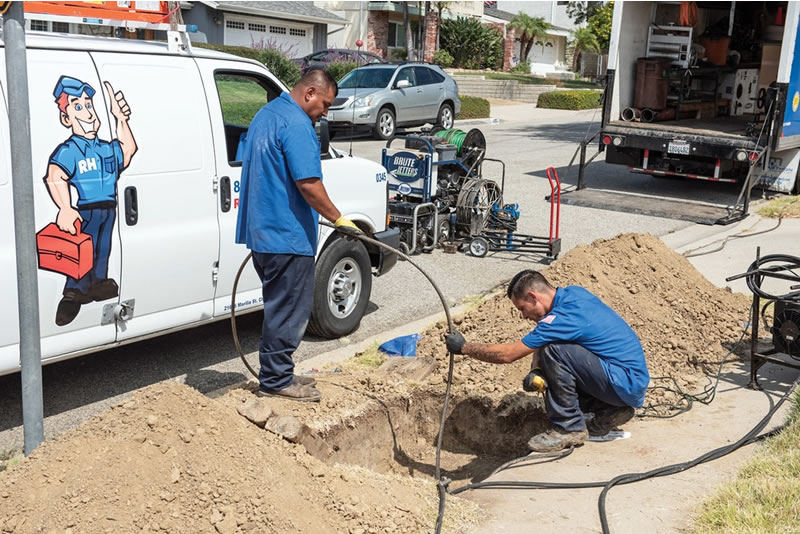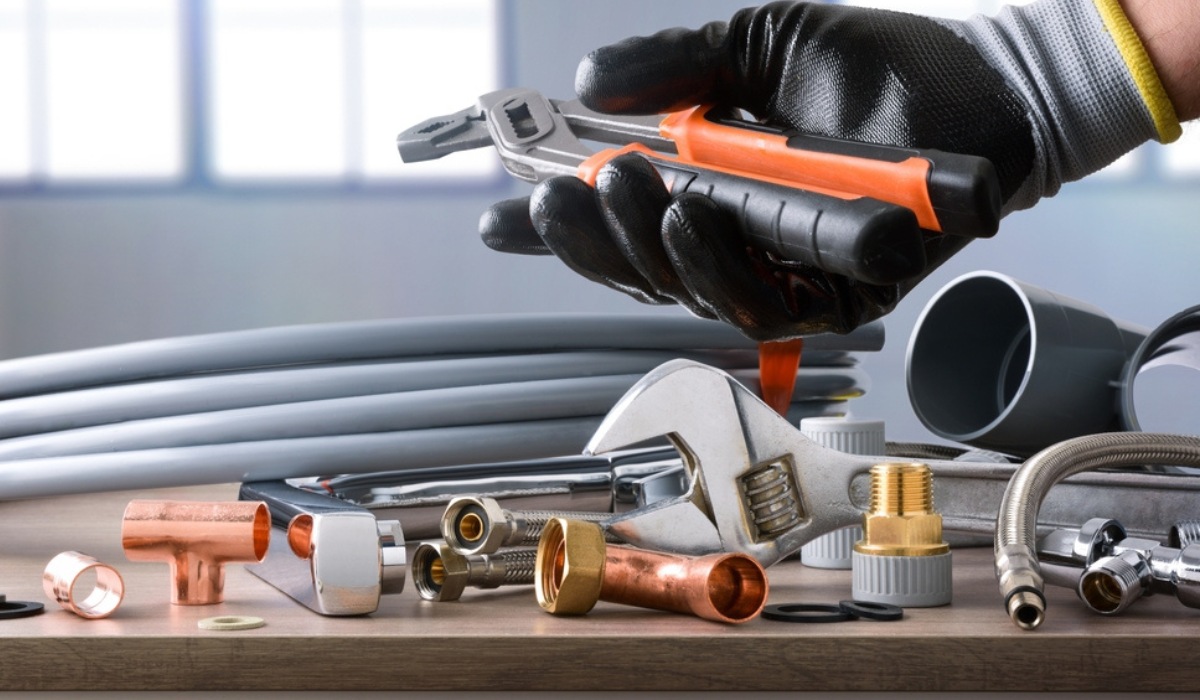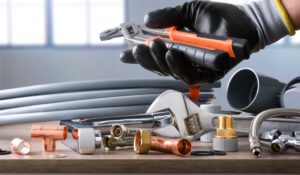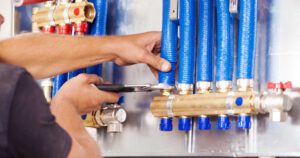A career as a plumber may not be considered glamorous, but it’s one of the most lucrative and respected jobs in the construction industry. It requires years of training and experience, and in many places, it’s required that plumbers be licensed.

Plunger Plumber is responsible for installing and repairing pipes, fixtures, appliances, and water systems. They also interpret building codes and regulations, and they collaborate with contractors to plan plumbing projects.
Plumbers specialize in the installation, repair, and maintenance of pipes and plumbing fixtures. These systems facilitate water distribution, waste water disposal, and gas supply in homes, businesses, factories, and other buildings. They may work for construction companies, plumbing contractors, or maintenance departments. Some plumbers are self-employed.
Typical job duties include assembling and disassembling pipes, installing plumbing fixtures and appliances, and repairing damaged parts of the pipe system. They also read blueprints and schematics to determine the location of piping and other equipment. Plumbers also perform minor excavation to install underground storm and sanitary sewer lines. They also inspect pipes for leaks, corrosion, and proper installation. They use hand and power tools to cut, bend, shape, and thread pipe fittings and flanges.
Other important aspects of the role are interpreting building codes and regulations and providing customer service. Plumbers must be able to answer questions about the cost and timeframe for the repair, as well as explain how to prevent future problems.
The plumber’s work environment can be chaotic and dangerous, especially when working with sewage or natural gas. They often work with heavy machinery and electricity and are exposed to toxic chemicals and hazardous materials. Plumbers must be able to handle these hazards to protect themselves and their customers.
Plumbing professionals also need to have good communication skills, as they must be able to listen to and understand the concerns of their clients. This allows them to make recommendations on plumbing solutions and products. They must also be able to communicate effectively with other workers, such as carpenters and electricians.
Plumbers need to keep track of their tools and equipment and maintain a clean appearance and professional demeanor at all times. They must also be able to follow written and verbal instructions and have a basic understanding of safety practices. Finally, they must be able to perform routine maintenance on their vehicles and equipment and complete accurate paperwork for each job. They must also be able to recognize and respond to potential emergencies quickly and efficiently. It is common for plumbers to be on call for emergency situations, so this can affect their work-life balance.
Education and training requirements
Having the right education and training is essential to working as a plumber. Most plumbers receive their formal training through an apprenticeship, which combines classroom instruction with paid on-the-job training. In addition to gaining practical experience, apprentices take classes at a local technical school to learn about the plumbing industry and state codes. The courses cover topics like plumbing tools and piping methods, welding, and safety.
Most apprentice programs last four to five years, and trainees usually begin working as helpers under the guidance of a master plumber. In many states, apprentices must complete a certain number of hours of classroom learning before they can take an exam to become journeymen workers. Additional training may be required for some jobs, such as those involving the installation of gas pipes or water heaters.
The educational requirements for becoming a plumber vary, but most programs require a high school diploma or equivalent and a background in construction work. Many vocational schools offer courses that can be used to fulfill these requirements, including drafting and blueprint reading. Additional coursework is also offered on subjects such as chemistry, math, and physics, and students should consider taking these classes to increase their chances of finding a job after graduation.
In the United States, most cities and states require a plumber to obtain a license. Licensing requirements vary by region, but most programs include a combination of classroom learning and hands-on on-the-job training. Applicants are often required to pass an exam, and some have additional requirements, such as a clean criminal record and continuing education requirements.
Some plumbing professionals choose to obtain additional certifications, which can increase their marketability to potential employers and clients. These credentials can include National Inspection Testing and Certification and International Association of Plumbing and Mechanical Officials certifications. These certifications are not required by all jurisdictions, but they can make the applicant more valuable to their employer and help them advance in the field. In addition, some cities and counties require licensed plumbers to obtain continuing education courses to renew their licenses. These courses are usually available through the local community college.
Work Environment
Plumbers must be comfortable working in a variety of environments. They may be called to work on homes, office buildings, or industrial plants, so they must be prepared for the different demands of each environment. They also must be able to work in tight spaces, which can be challenging for some people. The job often requires them to use hand tools and power equipment, so they must be accustomed to handling these devices. The work can also be hazardous, as plumbers are often exposed to chemicals and sewage. This can lead to burns, cuts, and other injuries. However, these risks can be minimized if they follow the proper safety precautions.
Plumbers usually work alone, but they can also be part of a team that includes carpenters and builders. They are frequently on the move, traveling to different locations to complete their work. This can be difficult for some people, but it can also be a positive aspect of the career. If they are working on a large project, plumbers may be required to travel to several sites to install or repair plumbing systems. They are also often required to meet deadlines, so they must be able to perform under pressure.
Many plumbers are self-employed, which allows them to control their schedules and choose their projects. They can also earn more money if they are willing to work overtime. Those who are self-employed tend to work evenings and weekends, as well as being on call for emergency situations. Some plumbers find this to be a positive aspect of their jobs, while others find the freedom to be more selective about their clients and projects frustrating.
Plumbers can have a rewarding career, especially when they are able to build up their client base and gain more independence in the field. They can also feel satisfaction in knowing that they are helping to protect the health and welfare of the public by providing access to clean water and sanitary waste disposal. Moreover, the physical requirements of the profession keep their bodies and minds active.
Salary
Plumbers earn a good salary, especially when they have years of experience. Their pay also depends on where they live and whether or not they belong to a labor union.
The demand for plumbers is growing, especially since homes and businesses need them to fix water and sewage systems. It’s a good career choice for people who aren’t interested in going to college but want to be useful and make money at the same time.
While a plumber’s salary isn’t as high as that of an engineer or doctor, it is still higher than the average wage in most industries. If you’re considering a career in plumbing, it is important to research the different types of jobs available so you can choose the right one for you.
Plumbing companies often offer performance bonuses for their employees. These bonuses are based on the success of the company as well as the individual employee’s performance. These bonuses can be a great way to motivate employees and increase productivity.
As a plumber, you’ll need to keep up with new tools, methods, and technologies to stay competitive in the industry. This can be difficult, but it’s important to know what the competition is doing so you can learn from them and improve your own business. It’s also helpful to stay up-to-date on the latest regulations and changes in the plumbing industry so you can comply with them as a business owner.
In the past, many high school graduates avoided pursuing careers in the trades because they weren’t interested in making much money. However, now more and more students are choosing to go into the trades because they’re cheaper than getting a college degree and can help them avoid student debt.
A lot of people think that plumbers don’t get paid very much, but the truth is that they do pretty well for their job. It’s not an easy position to fill, and the work is very important for our society. Plumbers need to be there to repair and maintain our water and sewage systems, so they deserve to be compensated well for their hard work.




